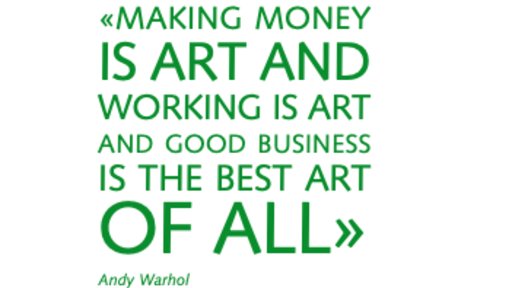The artist as role model and antipole
About managers and artists
Published at 30.09.2019

European companies establish art collections every year and position themselves in the context of business and culture; museums open exhibitions every month and appear worldwide with works from international corporate collections; Every week, inquiries for interviews appear on the tables of the cultural officers of companies about the growing importance of the successful liaison between economy and art.
Reason enough for us as Management School St.Gallen to make a substantial, multifaceted contribution in this context, which offers our customers, friends and colleagues an exciting insight into current discussions about the relationship between business and culture.
Emotion and systematics - no contradiction
As sometimes assumed today, artists are not driven by pure emotion. They are not an effective and exotic counter-image to a management geared towards efficiency and short-term success - on the contrary: who visits the studio today with artists between Stockholm and Johannesburg, between Beijing and Los Angeles will be surprised at how incredibly structured, effective, networked and they work. Art and culture are in focus like at no other time, they enjoy a reputation, they have an impact on our world like never before. Managers are mostly rationally controlled, artists are emotional, but both strive for perception, unique position and success. What initially gives the impression of contradiction, hides all the ingredients for connection. Art can become the pillar of an outstanding corporate culture; the settlement of companies is a location factor; subsidizing culture is an integral part of the public sector. Where a handful of people used to control the cultural offices, entire staffs are now employed; cities around the world compete with excessive cultural offerings.
And not all for a better world, but for a more interesting, more tolerant, more spacious, more open world. Yet art is not for the masses; in the past it was the entrepreneur alone who represented art and culture (if he did); he assumed cultural responsibility in the sense of representation. Representation is still important and justified today (see the many museums of private collectors), as is the resulting social added value.
Art and economy - a fertile liaison
Why does Management School St.Gallen allow these series of «Kunstpausen» to be published? Art is booming; Culture is a location factor. Art is a facet of big business - but also its opposite. It is precisely the Janus-headedness of art that is relevant and worth discussing. On the one hand, art opposes a one-dimensional world of purely economic usability, in this sense we can learn from art. But the art business is also the other side of culture, if you take into consideration the excesses of a rationalized, economic exploitation of culture. This balancing act between failure and success is of interest; there are more people who buy the Neue Zürcher Zeitung for the sake of the features than for the economy - a head-to-head race.
What still applies today: 90% of the artists who come from academies will not be able to make a living from what they have learned artistically. And yet: Art still helps to overcome class barriers. Our «Kunstpausen» should therefore also be understood as a self-survey of how much we know about this world that is making headlines around us: Fondation Vuitton and Tate Modern, Gurlitt and Beltracchi, booming art region China and art as a share. The auction houses report like a stock index ticker in an ever faster rhythm new auction records - on the other hand there is a thriving art association in the «lowlands» of everyday art - 170 art associations in Germany alone, and the trend is rising.
When companies open new locations in Europe - beare in mind: at a time when industrial production is partly being brought back from Asia - they always decide on their cultural added value by investing in art and culture at their locations: young people, qualified employees do not go to structurally weak areas where there is no quality of life apart from work. This is also reason enough that we look at the opportunities, with successful concepts of a liaison between economy and art - that we design and moderate the overlays.
This is a contribution by Mac J. Rohrbach, CEO of Management School St.Gallen.
Read the whole issue «Kunstpausen» (german language) in our series «Denkpausen»